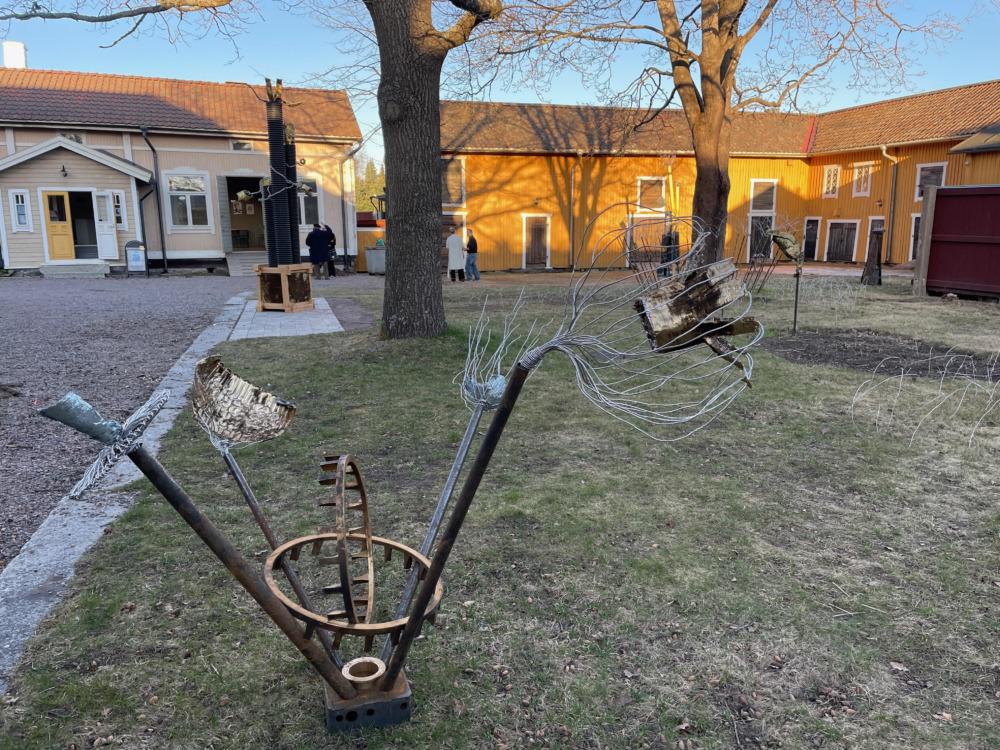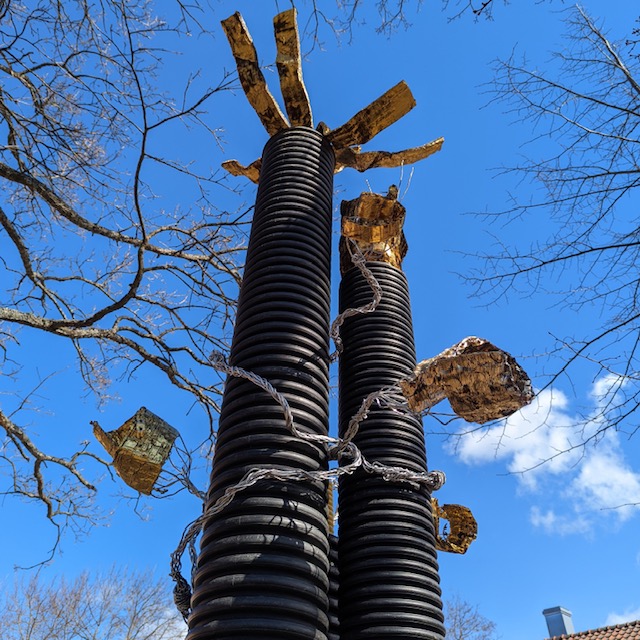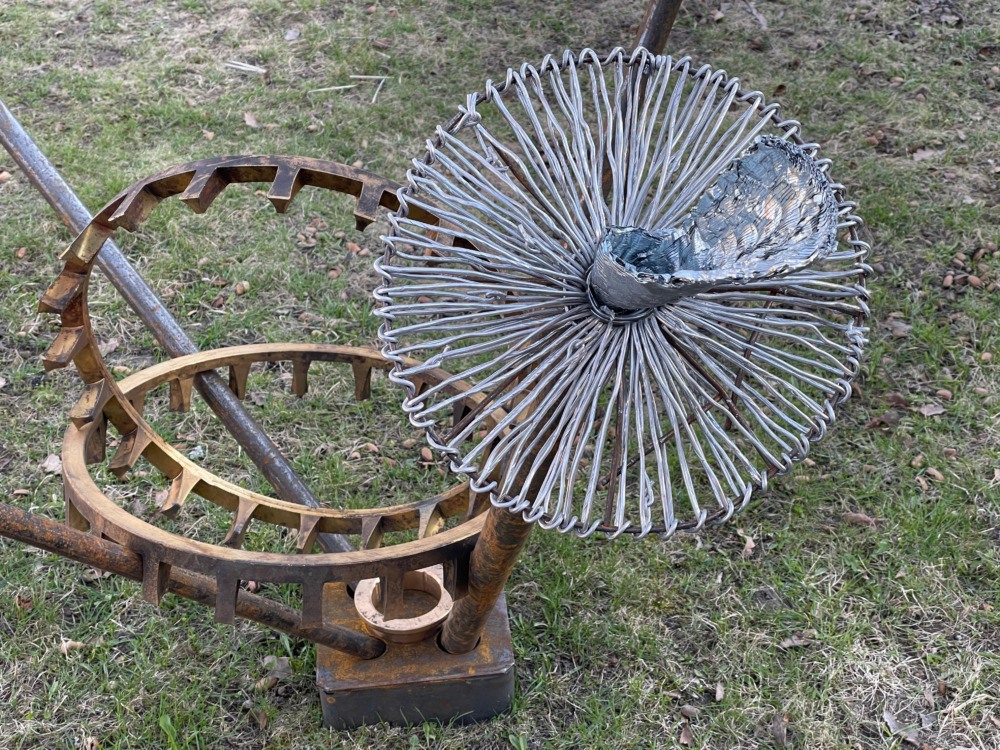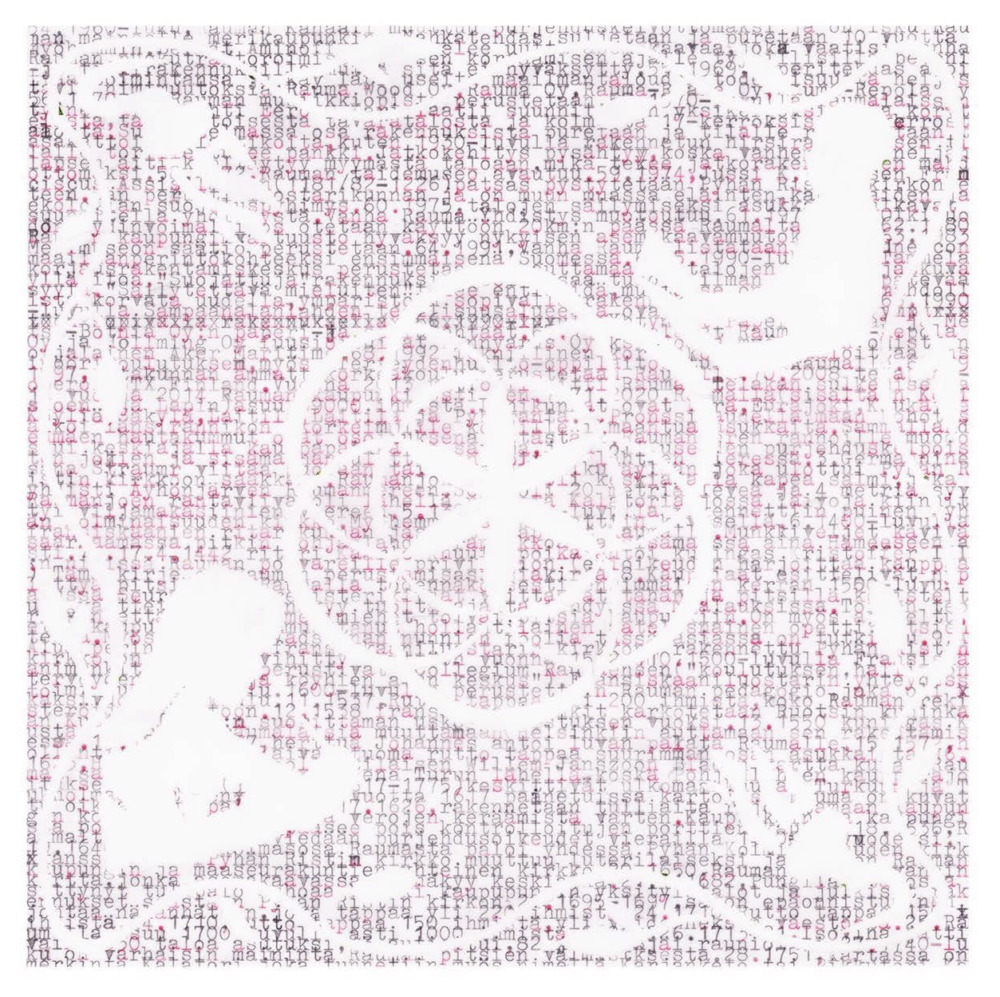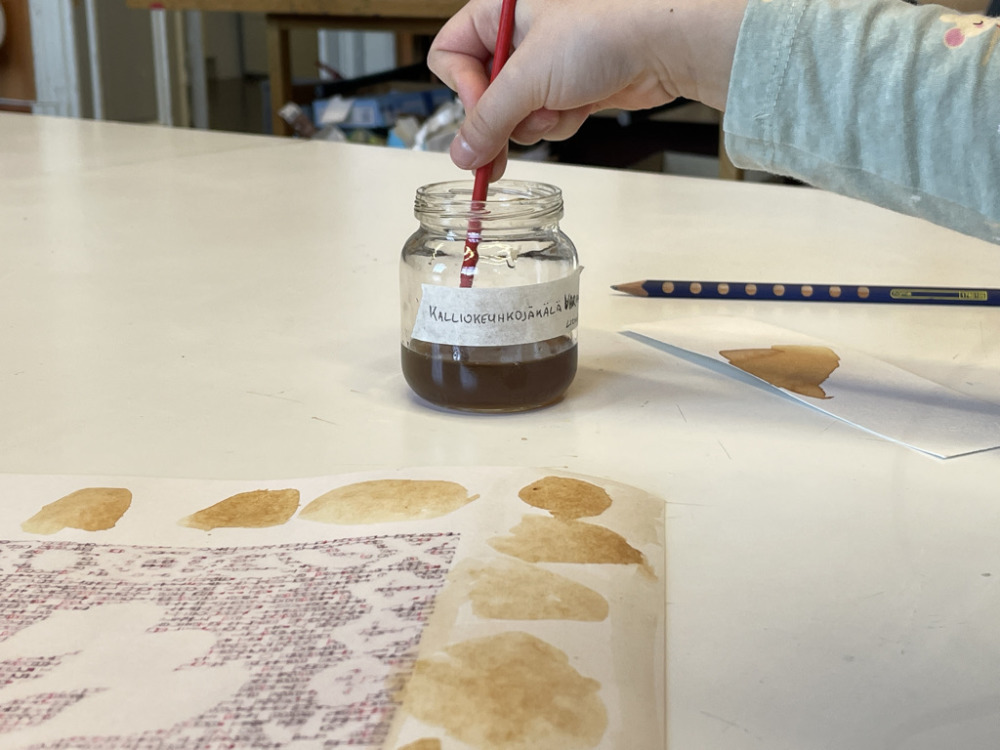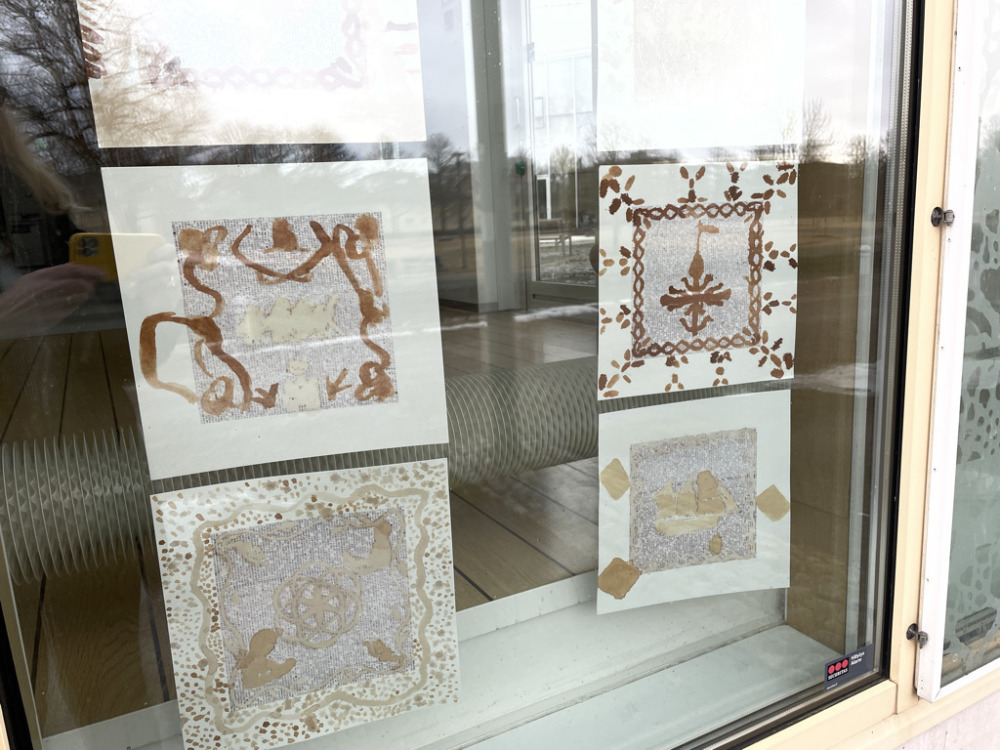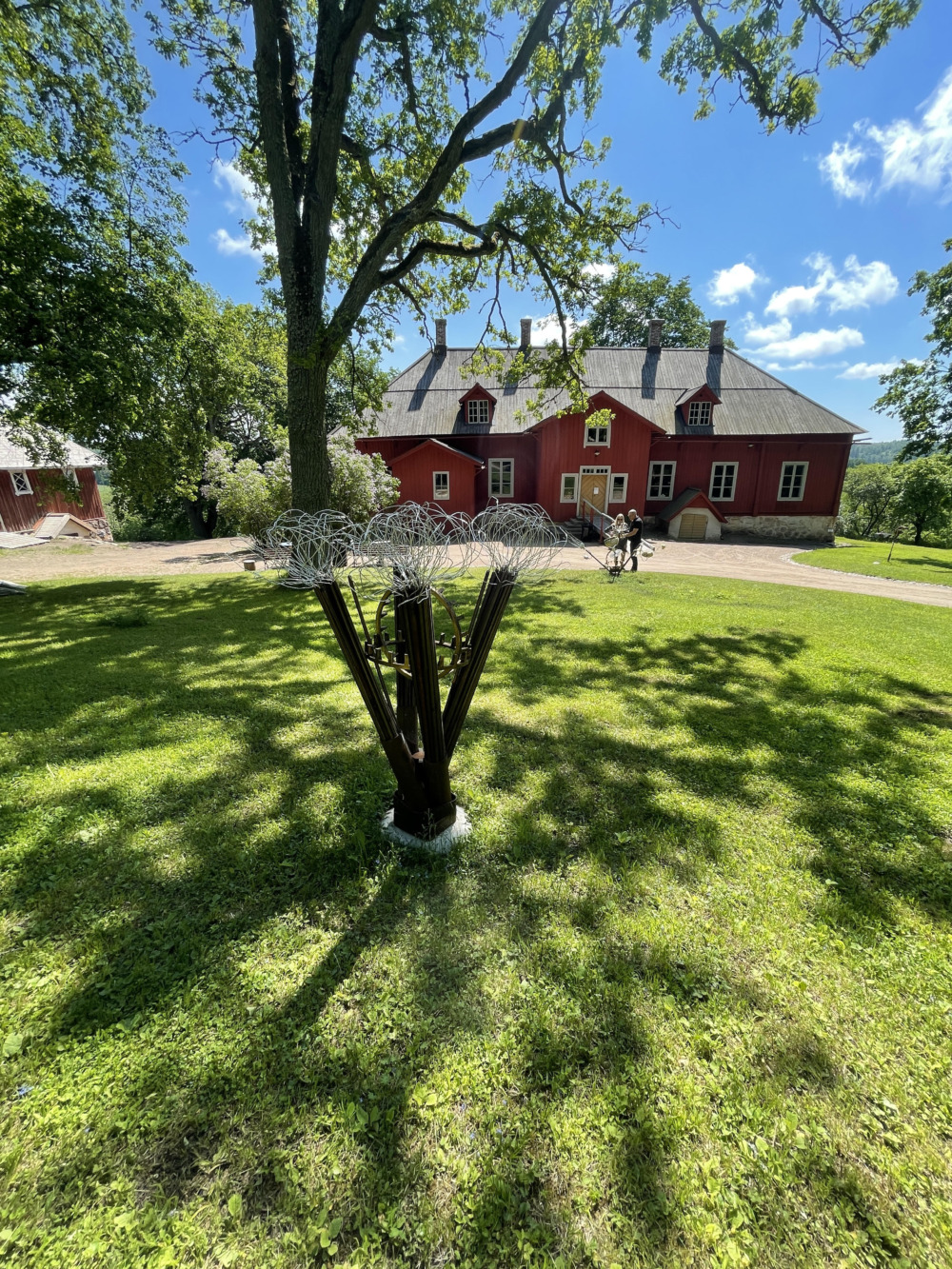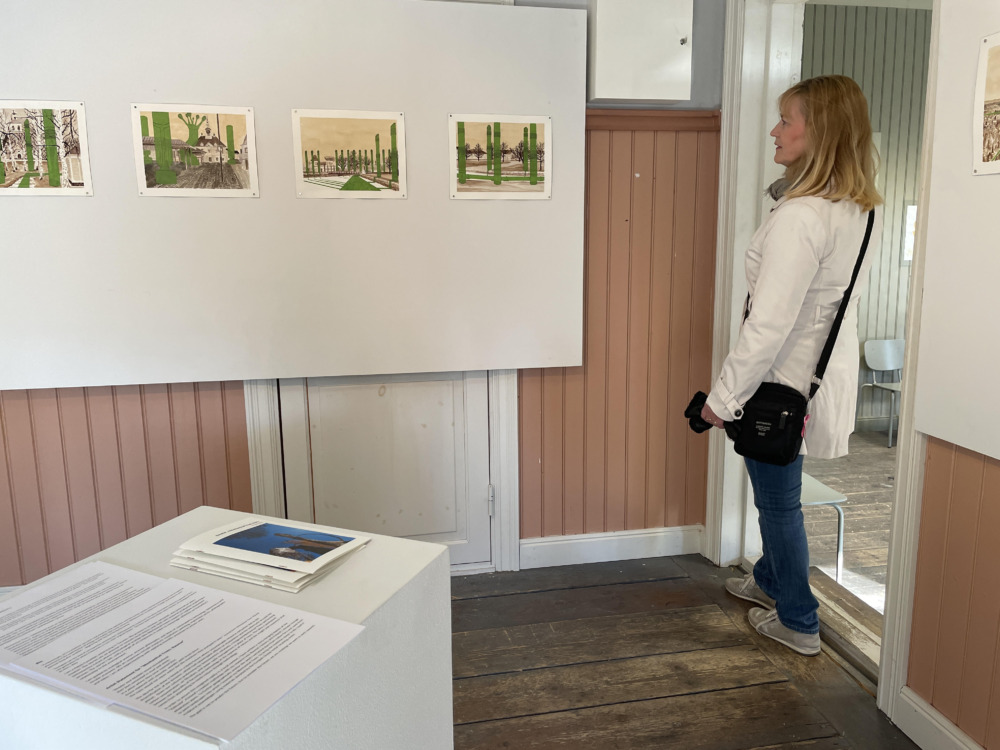Rauma 580-years -workshops for early childhood education groups and elementary schools during Children's Culture Weeks in 7.–20.3.2022.
Rauma 580-years artworks on display at Rauma library windows 10–18 April 2022.
Mechanical Trees exhibition Rauma Art Museum, courtyard and outbuildings 22 April–15 May, Kuusisto Art Manor, garden 24 May–8 September 2022 and Vuojoki Manor garden 9 September 2022–winter 2022/spring 2023. Permanent work Seppä's House garden 9 September 2022–
Residency: February-May
Andrzej Tarasiuk (PL/CA)
Rauma 580-workshops.
Toronto based Polish-Canadian visual artist Andrzej Tarasiuk held workshops in March during Culture weeks for Children. Kindergarden aged children learned of the history of Rauma in Rauma 580 workshops using natural colors made by the artist. Tarasiuk researched and became acquainted with the history of Rauma, from which six themes emerged: shipping, trade, education, art, handicrafts and religion. From these themes, he designed the images and wrote the history on a mechanical typewriter, making the prints on which the children could make their own works using colors made of plants. Tarasiuk extracted colors from, among other things, pine cones, conifer needles and bark, as well as lingonberry, birch bark and lichen.
Mekaaniset puut / Mechanical Trees
Tarasiuk, in cooperation with the teacher Maija Esko, also held workshops for the Department of Teacher Education for Rauma, for the students who took visual arts as a part of their studies and as a result their exhibitions Mechanical Trees and Aika kumma – Kumma aika will open simultaneously at the yard and outbuildings of the Rauma Art Museum.
Making art, Tarasiuk is guided by ecological science, process philosophy, and ideas of sustainability, technology, biomimicry and circular economy. His art responses include sculpture, installation, painting, impression prints, photography and video. As a whole the exhibition Mechanical trees contemplates the relationship between humans and nature and the way we utilize and control natural resources for our own means. The idea of the mechanical trees is not to preach about the future but to make us think about the nature, our place in the ecosystem and what kind of a world we want to create around us.
Mechanical Trees is intuitive, personal and story focused entirety. The idea is to combine local history and myths to raw material production. In addition to questioning the future we are walking towards, the artworks explore the relationship between nature and human made structures. They point to future, after the time when great ecosystem providers have collapsed and humanity would decide to search for technological solutions, the mechanical trees, to be used for example for carbon sequestration, air filtering and controlling water flow.
“Ilmatar and Mielikki stood immobilized,
their feet cemented in mud and stone,
in a place where they once roamed free.
Grace replaced with concrete, wonder with brute force.
The trees would not move water but the machines they pumped it now.” Andrzej Tarasiuk: excerpt from a short story Mechanical Trees: Rauma.
Tarasiuk has formerly been in multiple different residencies, including Argentina, Brazil, Ecuador and Peru, so he is well aware of what mining the natural resources does to the environment, for example at the Amazon River. Through the artworks in the exhibition he wants to show a possible future, where unsustainable exploitation of the nature leads to the collapse of ecosystems and how catastrophic the consequences will be all around Earth.
To join this imagined future to local context, Tarasiuk has written a short story, taking influences from Kalevala, history of Rauma and Finland's climate program. Mechanical Trees -concept has gained a strengthened foundation, anchoring the artwork strongly to Rauma when Tarasiuk decided to extract colors from the local fauna and use them for his landscape pieces.
Tarasiuk acknowledges the support of the Canada Council for the Arts.

